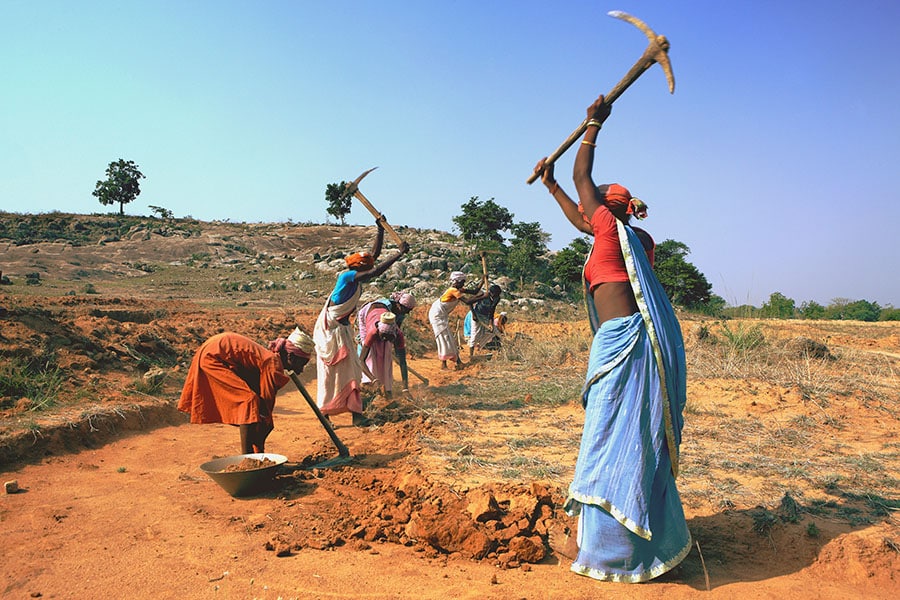
Budget 2024: Unpacking farmer income, housing, health insurance for ASHA, anganwadi workers
The social welfare focus was centred on the poor, youngsters, women and farmers in the finance minister's short speech. All eyes are, once again, on the details of implementation
 A file photo of Asha worker on her rounds administering polio vaccine. Image: Shutterstock
A file photo of Asha worker on her rounds administering polio vaccine. Image: Shutterstock
Minister of Finance Nirmala Sitharaman, in her interim Budget speech on February 1, announced a handful of social welfare schemes, centred around the government’s focus on “four major castes”, which is the poor, women, youngsters, and farmers. One of the announcements, which experts consider to be a huge step in the right direction, is the extension of health care cover under Ayushman Bharat to ASHA workers, anganwadi workers and other helpers.
“Extending this social security to them is the first step towards recognising anganwadi workers and ASHAs as ‘workers’ and not just honorary volunteers from the community,” says economist Mitali Nikore, founder of Nikore Associates, a youth-led economics research and policy think-tank. The biggest demand from ASHAs and anganwadi workers over the years has been to increase their honorariums, which is still in the lower end of single digit thousand rupees per month.
“A lot of the salaries for ASHA and anganwadi workers is controlled by state governments. Raising their salaries remains a key requirement, but their inclusion in Ayushman Bharat is a good signal, which one hopes will lead to more social security benefits and legal rights in the future,” says Nikore, adding that one needs to look out for how exactly the government will implement this.
Questions that need to be answered include how much coverage these workers will, get, whether the centre or states will bear this cost, or will it be a combination expense. The estimated budgetary allocation towards Ayushman Bharat-PMJAY has seen only a marginal increase, from Rs 7,200 crore in 2023-24 to Rs 7,500 crore this year.
The finance minister’s speech was largely women-forward, and she spoke about efforts and initiatives for women under various schemes, including housing scheme---the PM Awas Yojana---under which 70 percent houses have women as sole or joint owners, and the ‘Lakhpati Didi’ scheme that has helped 1 crore women across 83 self-help groups (SHGs) in the country to earn an income of at least Rs 1 lakh per household.









